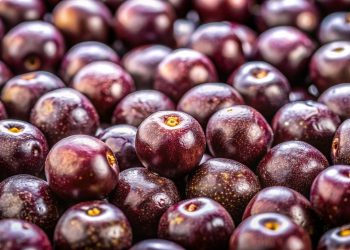Main findings of the September global overview:
- In southern Africa, towards the end of the winter cropping season, positive production prospects are reported for winter wheat in South Africa and Zimbabwe. In October, the region will begin preparations for 2024/2025 summer crop planting. According to the Copernicus rainfall forecast for November 2024 to January 2025, average to above-average rainfall conditions are forecast for most parts of the region, except for northern and south-western Angola and north-western Namibia, where drier-than-average conditions are forecast.
- In East Africa, flooding has resulted in crop damage in South Sudan and Sudan and at the localised level also in Ethiopia and Somalia. However, abundant rainfall has benefited rangeland conditions and increased water availability. In addition, crop areas in Sudan are showing rapid greening and there are positive yield expectations in Kenya and most Meher-season areas in Ethiopia. Mixed production expectations are reported by the Food Security and Nutrition Analysis Unit for Somalia. Despite the generally favourable agroclimatic conditions, the renewed intensification of the protracted conflict in Sudan constrains agricultural activities. Famine conditions had already been declared in some parts of the country (Integrated Food Security Phase Classification) in early August.
- North Africa is mostly dry in this season, and winter cereal production has been affected by severe drought in western Algeria and Morocco. Central and eastern Algeria and Tunisia have experienced better rainfall conditions since December 2023, leading to close-to-average crop yields.
- In West and central Africa, harvesting of main-season cereals will be completed in West Africa in September, and across the Sahel harvesting of main-season cereals is about to start. According to the Prevention and Management of Food Crises mechanism, in September 2024, cereal production forecasts were between 68.5 million tonnes (9 % above the 5-year average) and 80 million tonnes (12 % above the 5-year average), without including production in Liberia and Senegal. However, the region is facing increased humanitarian aid needs, as severe flooding since the end of July has been ravaging the region and especially Chad, Mali, Niger and Nigeria.
- In the Middle East, land preparation for the sowing of winter wheat and barley has started under average conditions. The rice harvest is under way (in northern Iran) or will start in November (in southern Iran and southern Iraq), with favourable production prospects. Similarly, in Yemen, the harvest of sorghum and wheat has started, and prospects are favourable.
- In central Asia, the harvest of spring wheat and summer crops is nearing completion under favourable conditions. However, in Kazakhstan, excess moisture during maturation may have reduced wheat yield and grain quality. In the region, the sowing of winter wheat and barley has also started or is about to start under close-to-average conditions. In Afghanistan, the rice harvest is expected to start in October and prospects are good. In South Asia, harvesting of kharif crops has started in Pakistan, with favourable prospects. In Bangladesh, the biomass of aman rice is average to above average. In Sri Lanka, the harvest of second-season (yala) rice and maize is nearing completion, with good prospects.
- South-East Asia is no longer monitored by Anomaly Hotspots of Agricultural Production (ASAP) analysts. In eastern Asia, the ASAP team continues to monitor only North Korea, where the maize and rice harvests are under way, with favourable prospects thanks to above-average crop biomass driven by good rainfall since July. If specifically requested, an ad hoc analysis can be conducted for any country in the region (please contact us by email: JRC-ASAP
 ec [dot] europa [dot] eu (JRC-ASAP[at]ec[dot]europa[dot]eu)).
ec [dot] europa [dot] eu (JRC-ASAP[at]ec[dot]europa[dot]eu)). - In Latin America and the Caribbean islands, harvesting of sorghum, wheat and maize was completed in September, with poor prospects in Bolivia’s main grain producer department (Santa Cruz). In Colombia, Cuba, Ecuador, Haiti and Peru, ongoing harvests have favourable prospects. In these same countries, crops in the sowing and vegetation stages are developing under average conditions. Harvesting prospects for primera cycle crops are favourable in the main producing areas of El Salvador, Honduras and Nicaragua. In Guatemala, lower-than-average yields are expected.
The next assessment is scheduled for the end of Octomber 2024.
O artigo foi publicado originalmente em JRC.

















































